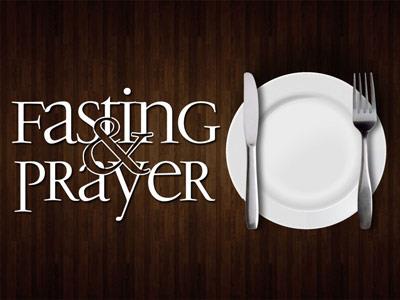-
Prayer Postures Series
Contributed by Samuel Arimoro on Feb 19, 2025 (message contributor)
Summary: Prayer is an intimate conversation between the believer and God. It is not only about the words spoken but also the posture of our hearts and bodies. Throughout Scripture, different physical postures in prayer are shown, each reflecting an attitude of reverence, humility, and faith.
- 1
- 2
- Next
PRAYER POSTURES
By Rev. Samuel Arimoro
Main Text: 1 Timothy 2:8
"I want men everywhere to lift up holy hands in prayer, without anger or disputing."
Supporting Texts: Psalm 95:6, Matthew 26:39, 2 Chronicles 6:13, Mark 11:25
INTRODUCTION:
Prayer is an intimate conversation between the believer and God. It is not only about the words spoken but also the posture of our hearts and bodies. Throughout Scripture, different physical postures in prayer are shown, each reflecting an attitude of reverence, humility, and faith. These postures help to align our hearts with God’s will and allow us to express our devotion and submission before Him. In this sermon, we will examine the significance of various prayer postures and how they can enhance our connection with God.
1. THE POSTURE OF KNEELING
Kneeling is a powerful posture that symbolizes submission and humility before God.
a) Acknowledging God’s sovereignty (Psalm 95:6)
Kneeling before God is a physical expression of acknowledging His supreme authority and sovereignty over our lives.
b) A symbol of humility (Philippians 2:10)
Kneeling demonstrates humility as we bow before the Creator of the universe, recognizing our dependence on Him.
c) A posture of reverence (Ephesians 3:14)
It is a sign of deep respect for God’s majesty and holiness.
d) A way to seek divine intervention (Luke 22:41-42)
Jesus, in His moment of distress, knelt to pray, seeking God's will and intervention.
e) Biblical Example: Jesus in Gethsemane (Matthew 26:39)
Jesus knelt in prayer, surrendering His will to the Father in obedience and seeking strength to fulfill His divine mission.
2. THE POSTURE OF STANDING
Standing in prayer reflects alertness, readiness, and reverence, often used for intercession or supplication.
a) Reflecting readiness to hear from God (1 Kings 8:22)
Standing shows a willingness to stand in God's presence, actively listening for His guidance.
b) A sign of standing firm in faith (Ephesians 6:13)
It demonstrates strength and readiness to take a stand for God’s purposes.
c) Calling on God with boldness (Mark 11:25)
Standing can symbolize confidence in approaching God’s throne of grace to ask for what is needed.
d) A posture of leadership in prayer (1 Timothy 2:8)
Standing can represent leadership in prayer, especially for the congregation or in intercession for others.
e) Biblical Example: Solomon’s Prayer (1 Kings 8:22)
Solomon stood before the altar of the Lord and offered a prayer of dedication, seeking God’s favor for the temple.
3. THE POSTURE OF LIFTING UP HANDS
Lifting hands in prayer signifies surrender, worship, and openness to God’s presence.
a) Expressing surrender and submission (1 Timothy 2:8)
Lifting hands is an outward expression of yielding to God’s authority and guidance.
b) A symbol of worship and adoration (Psalm 63:4)
Lifting hands during worship reflects the deep love and reverence we have for God.
c) A posture of receiving from God (Luke 11:13)
It symbolizes openness and readiness to receive God’s blessings and guidance.
d) Expressing faith and trust (Nehemiah 8:6)
Lifting hands during prayer can be a way to express faith that God will hear and answer our prayers.
e) Biblical Example: King David (Psalm 141:2)
David lifted his hands in prayer and worship, seeking God’s guidance and presenting his desires before God.
4. THE POSTURE OF BOWING OR PROSTRATING
Bowing or prostrating before God expresses deep reverence, humility, and submission to His will.
a) Acknowledging God’s supreme authority (Isaiah 66:1-2)
Bowing or prostrating is a physical act that acknowledges God's ultimate authority and majesty.
b) Submitting our will to God’s will (Matthew 26:39)
This posture symbolizes surrendering our own desires in exchange for God’s will to be done.
c) A symbol of worship and adoration (Revelation 7:11-12)
Bowing or prostrating demonstrates our worship and deep respect for God’s holiness.
d) A posture of repentance (Ezra 9:5-6)
Bowing down can signify a posture of repentance, acknowledging sin and asking for God’s forgiveness.
e) Biblical Example: The Prostration of Abraham (Genesis 17:3)
Abraham fell on his face in reverence and submission when God spoke to him about His covenant.
5. THE POSTURE OF SITTING
Sitting is sometimes used in prayer to signify peace, comfort, and rest in God’s presence.
a) Reflecting on God’s faithfulness (Psalm 46:10)
Sitting can symbolize finding rest and peace in God’s promises, reflecting on His faithfulness.
b) A posture of meditation and contemplation (1 Chronicles 17:16)
Sitting allows time to meditate on God's word, listening and contemplating His guidance.
c) Expressing submission in a relaxed state (Luke 10:39)
Sitting at Jesus' feet, as Mary did, signifies a position of learning and submitting to His teachings.
d) A time to receive from God (Acts 2:2-3)
In times of prayer and waiting, sitting is often used as a posture for receiving God’s presence and instruction.
e) Biblical Example: Mary Sitting at Jesus’ Feet (Luke 10:39)
Mary chose to sit at the feet of Jesus, showing her desire to receive His teaching and care.

 Sermon Central
Sermon Central



